IN PHOTOS: Pompeii's treasures go on display at reopened Antiquarium museum

Decades worth of archaeological finds are back on public display in Pompeii from this week, in what the site's management called a "sign of great hope at a very difficult moment".
From Monday, the site has officially reopened its refurbished Antiquarium, a museum housing bronze statues, frescoes, gold and silver jewels as well as the haunting casts of those killed when Vesuvius erupted in October 79 AD.
IN PHOTOS: The treasures unearthed during Pompeii's six-year restoration
The public will be able to view recent finds from the site which shed new light on the ancient Roman city, which was destroyed by the volcanic eruption nearly 2,000 years ago.
"You have some of the most important objects uncovered here since the 19th century. So really, this Antiquarium takes you through the centuries of Pompeii's history, up until the fateful day of the eruption," said Massimo Osanna, the director of the Pompeii archaeological park near Naples in southern Italy.
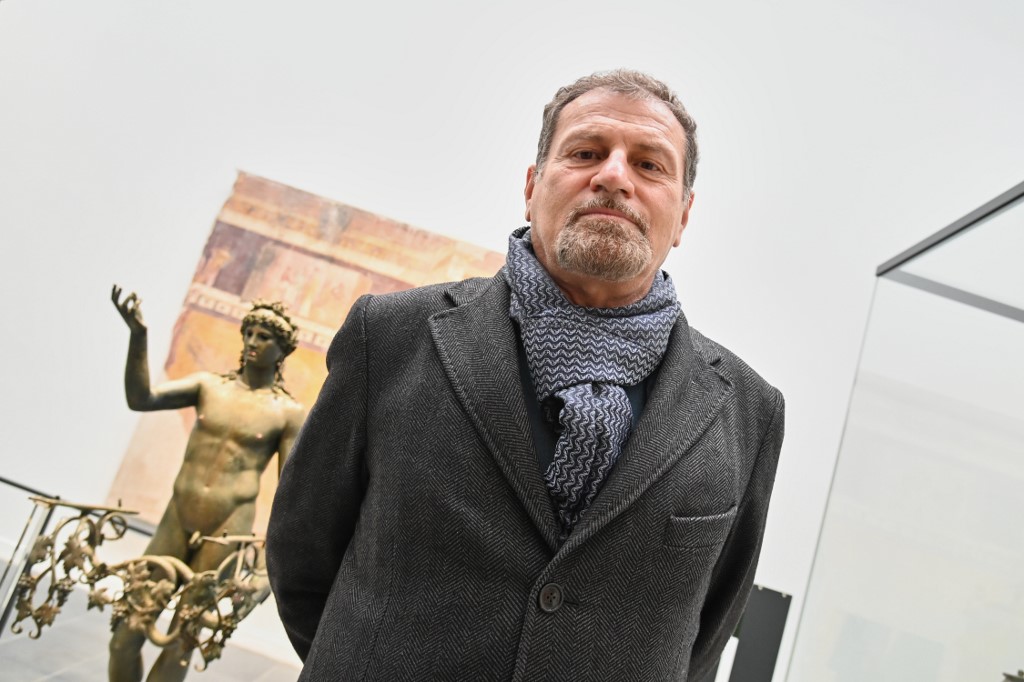
Massimo Osanna, the director of the Pompeii archaeological park. All photos: Andreas Solaro/AFP
One is a sorcerer's toolbox including dozens of amulets, rings, statuettes and charms made of ivory, bronze, glazed ceramics and amber.
"It's one of the most peculiar things we found during our excavations: amulets we found in a box in a house... which seem to belong to a woman - or a man, perhaps - who used magic," said Osanna.
The room that chronicles the last days of the city is "the most poignant part (of the exhibition)," the Italian archaeologist added.
The plaster casts of the dead, including small children, were made by filling voids left by their bodies in the calcified layers of ash.
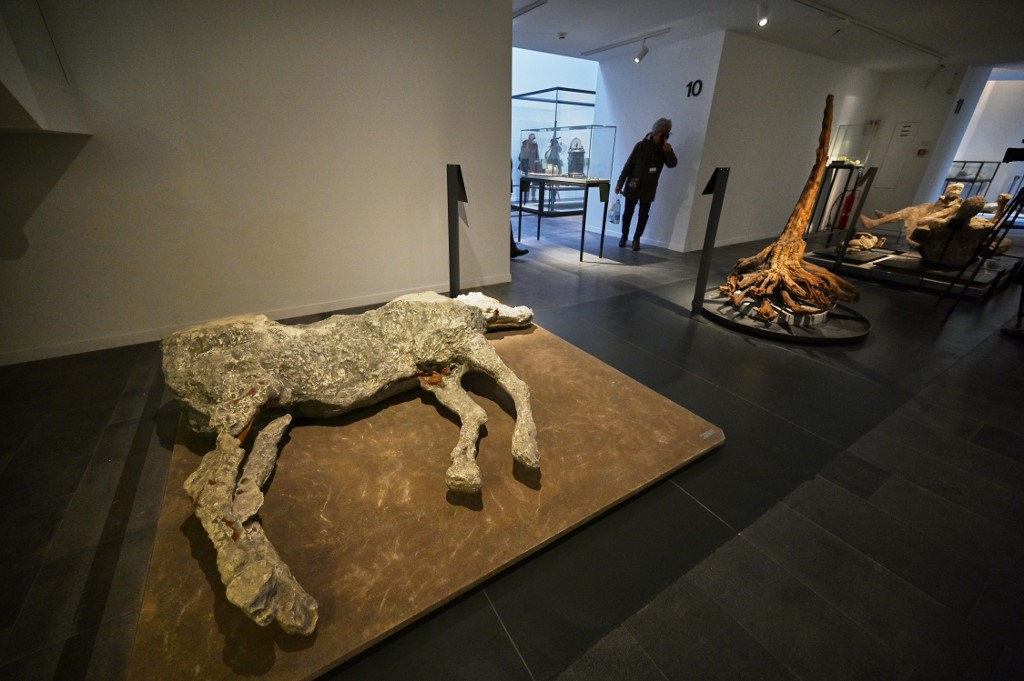

All photos: Andreas Solaro/AFP
Osanna has headed the Pompeii park since 2014 and overseen a major conservation project, mostly funded by the European Union, which revitalised a UNESCO world heritage site formerly plagued by neglect and building collapses.
Last month, archaeologists announced the unique discovery of a thermopolium, a fast-food bar.
It had surviving polychrome decorations and traces of food and wine that offered an unprecedented glimpse of the snacking habits of the ancient Romans.


Restorers work at the newly-discovered thermopolium. All photos: Andreas Solaro/AFP
A team found duck bone fragments as well as the remains of pigs, goats, fish and snails in earthenware pots, one of which "gave off a very strong stench of wine", archaeologist Teresa Virtuoso said.
In 2019, Pompeii had more than 3.9 million visitors, making it Italy's third most popular tourist destination after the Colosseum and Roman forum complex and the Uffizi Galleries in Florence.
But, like most other cultural sites in Italy, it has been mostly shut in recent months due to the coronavirus pandemic.
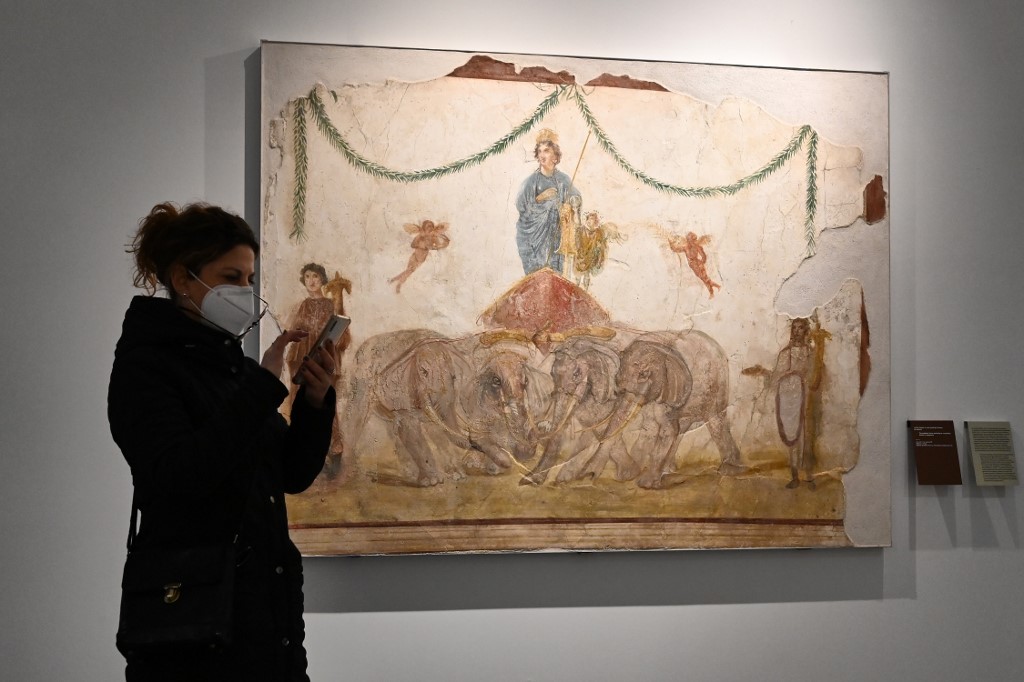
It reopened on January 18th but has admitted fewer than 100 visitors per day, compared to a pre-Covid-19 average of around 8,000
"We've lost 80 percent of our visitors, and this also means 80 percent of our ticket revenues," Osanna said, adding that the site had to rely on generous subsidies from the Italian culture ministry to keep going.
On Monday the vast archaeological park looked deserted, save for the journalists who came for the museum opening and the usual presence of archaeologists, restorers, guardians and unemployed tourist guides.
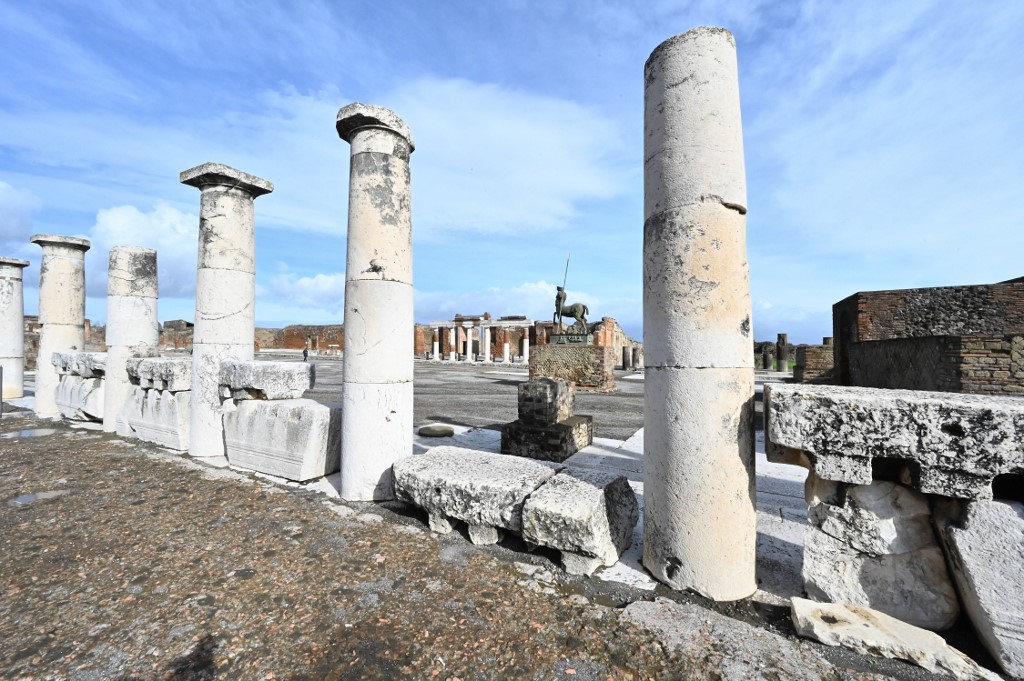
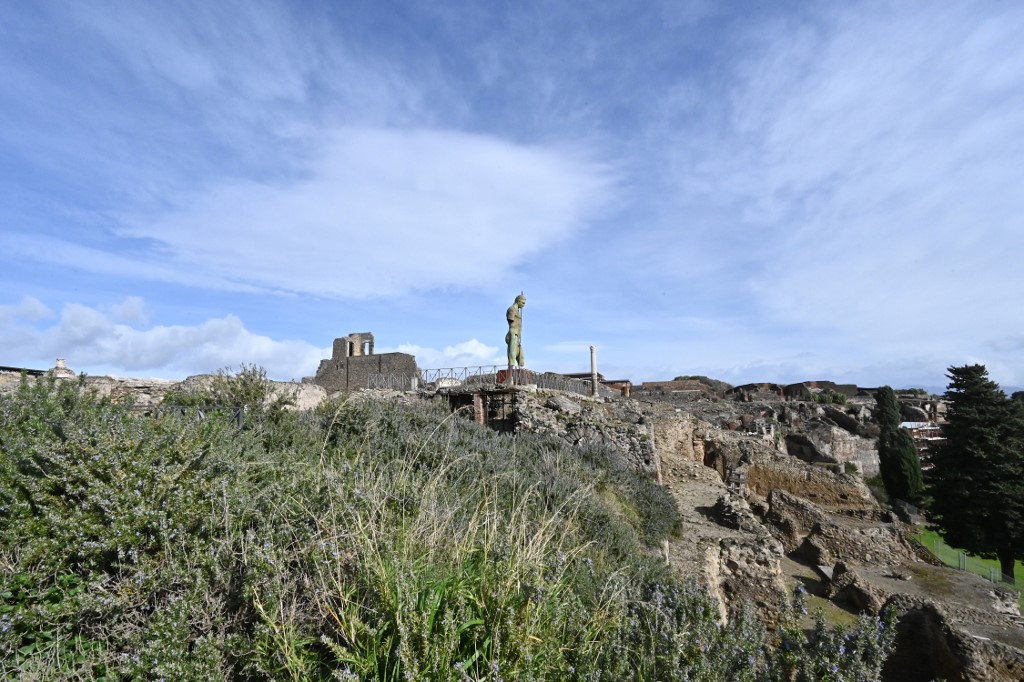
All photos: Andreas Solaro/AFP
Its current state is surreal, but Osanna said it was nevertheless a great time to visit.
"It is almost as if you can see Pompeii's inner soul, its spirit," he said.
"This is an abandoned city, and seeing it empty of tourists perhaps makes you think harder about the dreadful catastrophe that forever ended life here and reduced to silence a place that was bustling."
At the moment, only those already in the Campania region of southern Italy can visit the site.
Italy currently has a complete ban in place on non-essential travel, including for tourism, between all regions regardless of their colour under the country's tiered system of restrictions.

All photos: Andreas Solaro/AFP
Comments
See Also
From Monday, the site has officially reopened its refurbished Antiquarium, a museum housing bronze statues, frescoes, gold and silver jewels as well as the haunting casts of those killed when Vesuvius erupted in October 79 AD.
IN PHOTOS: The treasures unearthed during Pompeii's six-year restoration
The public will be able to view recent finds from the site which shed new light on the ancient Roman city, which was destroyed by the volcanic eruption nearly 2,000 years ago.
"You have some of the most important objects uncovered here since the 19th century. So really, this Antiquarium takes you through the centuries of Pompeii's history, up until the fateful day of the eruption," said Massimo Osanna, the director of the Pompeii archaeological park near Naples in southern Italy.

Massimo Osanna, the director of the Pompeii archaeological park. All photos: Andreas Solaro/AFP
One is a sorcerer's toolbox including dozens of amulets, rings, statuettes and charms made of ivory, bronze, glazed ceramics and amber.
"It's one of the most peculiar things we found during our excavations: amulets we found in a box in a house... which seem to belong to a woman - or a man, perhaps - who used magic," said Osanna.
The room that chronicles the last days of the city is "the most poignant part (of the exhibition)," the Italian archaeologist added.
The plaster casts of the dead, including small children, were made by filling voids left by their bodies in the calcified layers of ash.


All photos: Andreas Solaro/AFP
Osanna has headed the Pompeii park since 2014 and overseen a major conservation project, mostly funded by the European Union, which revitalised a UNESCO world heritage site formerly plagued by neglect and building collapses.
Last month, archaeologists announced the unique discovery of a thermopolium, a fast-food bar.
It had surviving polychrome decorations and traces of food and wine that offered an unprecedented glimpse of the snacking habits of the ancient Romans.


Restorers work at the newly-discovered thermopolium. All photos: Andreas Solaro/AFP
A team found duck bone fragments as well as the remains of pigs, goats, fish and snails in earthenware pots, one of which "gave off a very strong stench of wine", archaeologist Teresa Virtuoso said.
In 2019, Pompeii had more than 3.9 million visitors, making it Italy's third most popular tourist destination after the Colosseum and Roman forum complex and the Uffizi Galleries in Florence.
But, like most other cultural sites in Italy, it has been mostly shut in recent months due to the coronavirus pandemic.

It reopened on January 18th but has admitted fewer than 100 visitors per day, compared to a pre-Covid-19 average of around 8,000
"We've lost 80 percent of our visitors, and this also means 80 percent of our ticket revenues," Osanna said, adding that the site had to rely on generous subsidies from the Italian culture ministry to keep going.
On Monday the vast archaeological park looked deserted, save for the journalists who came for the museum opening and the usual presence of archaeologists, restorers, guardians and unemployed tourist guides.


All photos: Andreas Solaro/AFP
Its current state is surreal, but Osanna said it was nevertheless a great time to visit.
"It is almost as if you can see Pompeii's inner soul, its spirit," he said.
"This is an abandoned city, and seeing it empty of tourists perhaps makes you think harder about the dreadful catastrophe that forever ended life here and reduced to silence a place that was bustling."
At the moment, only those already in the Campania region of southern Italy can visit the site.
Italy currently has a complete ban in place on non-essential travel, including for tourism, between all regions regardless of their colour under the country's tiered system of restrictions.

All photos: Andreas Solaro/AFP
Join the conversation in our comments section below. Share your own views and experience and if you have a question or suggestion for our journalists then email us at [email protected].
Please keep comments civil, constructive and on topic – and make sure to read our terms of use before getting involved.
Please log in here to leave a comment.